I’ve upgraded this flax weaving website. Click the following link to go to my new site: “A full upgrade of my website”.
The history of flax use in New Zealand
For hundreds of years before the arrival of European settlers, Māori — the indigenous people of New Zealand — utilised native New Zealand flax as a raw material for clothing, food gathering, hunting, fishing, homeware and medicine. Māori communities cultivated plantations, or pa harakeke, of the flax varieties that had the best leaf and fibre qualities for their needs.
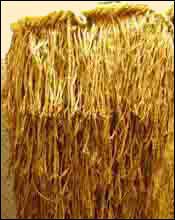
Flax was the primary material used in all types of clothing — rain capes, cloaks, skirts, loin cloths, sandals and belts. Rain capes used twined flax fibre for the base of the garment and short strips of the leaf to make a layered thatch on the outside. This shed the rain in much the same way as the thatch on an English cottage.
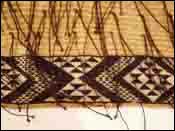
Flax cloaks ranged from the purely functional to the highly decorative. One style of cloak used the fibre from a special variety of flax, woven very evenly and finely, to make a soft draping garment with a silky sheen. These cloaks often had a Tāniko border of dyed flax fibre woven in geometric patterns. Some cloaks had feathers entwined in the rows of flax. One highly prized style used feathers from the Kiwi, a flightless native bird that is now protected as the national symbol of New Zealand. The arrival of European goods in the mid-eighteenth century saw the introduction of pre-made cords, unravelled from woollen garments, as a popular decorative feature.
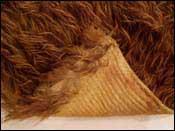
Flax skirts and loin cloths were constructed by hanging long strips of curled flax from a patterned waistband. The strips were prepared by exposing and dyeing small sections of the inner fibre of the leaf at measured intervals along the length of the strips. They were then left to dry and curl into long thin cylinders. When hung from the waistband, the dyed fibre sections made geometric patterns on the skirts and gave the cylinders the flexibility to flow gracefully with the movement of the wearer.
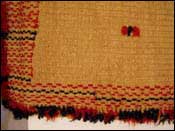
The strength and relative durability of flax made it ideal for sandals, fishing nets, sails, bird snares, ropes, floor mats and basketry. On long trips men took several pairs of sandals with them, weaving more as they wore out. Deep-sea fishing nets of up to 1000 metres in length were constructed entirely from flax strips, using the same type of knots as European net makers. Flax rope was used for building houses and boats, to fix stone heads to implements and for making bird snares. Flax mats were woven to cover the floors of buildings, and decorative wall coverings were made from dyed flax woven into patterns over a frame. The soft inner fibres of flax were used for babies' mattresses.

Māori utilised a variety of different flax baskets in their daily tasks. For example, quickly-made baskets were used once for serving food and then thrown away. Shellfish were gathered in baskets with an open weave so that sand could be washed from the shellfish once they were gathered. Larger, open-weave baskets were used for gathering and storing potatoes. A harness of woven straps tied onto a person's back was used to carry loads. (Modern backpacks are made in a different style and often use patterns and colours).
Flax was also valued by Māori for its medicinal properties. The leaves, gum, rhizomes and stalks of the flax plant were made into poultices, purgatives, disinfectants and ointments for skin disorders and wounds, stomach upsets and swollen joints.
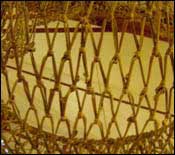
In the mid-nineteenth century, flax began to be harvested by European settlers and exported to Australian and English rope manufacturers. Later, with the invention of the flax stripping machine, large-scale commercial processing became possible in New Zealand. Flax rope-making was a major industry for almost a century, with hundreds of flax mills operating during the boom years. During the depression in the 1930s the industry diversified into flax woolpacks but the advent of cheaper synthetic fibres in the 1970s spelt the end of the flax milling industry.
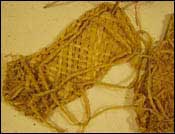
Flax weaving by hand almost died out as Māori became urbanised in the early part of the twentieth century, but there was a resurgence of interest in traditional flax crafts in the latter part of the century. Flax weaving is now an integral part of the cultural identity of New Zealand. Flax clothing is worn at cultural events, heirloom cloaks are worn for ceremonial occasions, and contemporary artists and craftspeople are increasingly using flax and flax products in their creations.
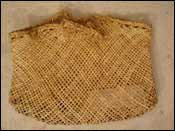
More recently there has also been a resurgence of interest in exploring the commercial potential of flax. Since the turn of century all parts of the New Zealand flax plant — fibre, seeds and gel — have begun to be researched for their potential value in fabrics, food oils, pharmaceuticals and cosmetics, and as a replacement for fibreglass.

